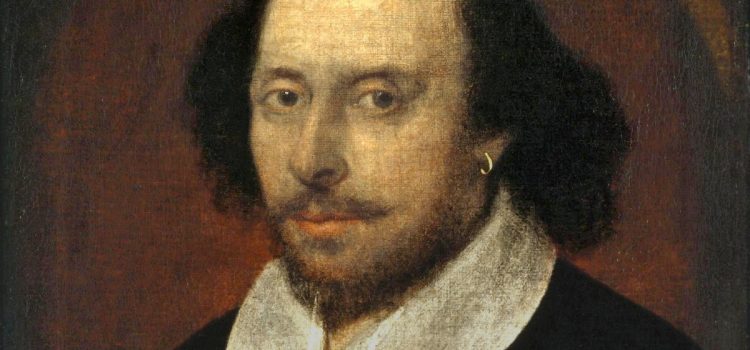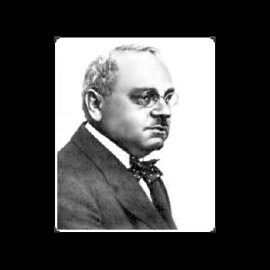
What did Shakespeare look like in real life? How can three historic portraits help unravel this centuries-old mystery?
In his book Shakespeare, Bill Bryson explores the fascinating quest to understand the Bard’s true appearance through three significant historical representations. Each image tells its own story, revealing clues about Shakespeare’s life while raising new questions about authenticity and artistic interpretation.
Keep reading to learn about these remarkable portraits and discover what they reveal about history’s most celebrated playwright.
What Shakespeare Looked Like
What did Shakespeare look like? The quest to know what William Shakespeare truly looked like has captivated scholars, artists, and enthusiasts for centuries, yet his authentic appearance remains shrouded in mystery. Among the handful of purported contemporary depictions, three significant representations have emerged as the most widely discussed and debated: the elegant but unconfirmed Chandos Portrait, the technically flawed but historically significant Droeshout Engraving, and the contentious effigy at Holy Trinity Church in Stratford. Each of these representations offers unique insights into both the appearance of England’s greatest playwright and the complex cultural and artistic practices of Elizabethan and Jacobean England, while simultaneously raising questions about authenticity, artistic interpretation, and the challenges of historical preservation.
The Chandos Portrait
The Chandos portrait, one of many purported depictions of Shakespeare, remains a subject of scholarly debate. The painting shows a confident, serene man in his forties, wearing sophisticated black garments and sporting a neatly groomed beard and gold earring. His attire suggests both wealth and social status, while the earring indicates a connection to artistic and theatrical circles of the time.
Currently housed in London’s National Portrait Gallery since its founding, the portrait’s origins and subject remain uncertain. While Bryson suggests the man in the portrait could indeed be Shakespeare, and the stylistic elements align with both the time period and Shakespeare’s profession, the lack of documented history makes definitive authentication impossible. Though the Chandos portrait continues to intrigue scholars and enthusiasts alike, its status as a true representation of the Bard remains unconfirmed.
| Shortform Note The Elizabethan era was a time of flourishing arts and culture, with portraiture serving as the primary means of capturing likenesses before photography. Typically commissioned by the wealthy to display power, influence, or intellectual prowess, portraits were rich with symbolic elements that conveyed deeper meanings about the subject’s life and work. Fashion and appearance in these portraits often indicated social status: black garments, which required expensive and difficult-to-produce dyes, symbolized wealth, while a neatly groomed beard suggested sophistication and personal pride. Even accessories held meaning, as earrings were sometimes associated with those who traveled or had connections to the sea, including actors who toured with theater companies. This cultural context makes the scarcity of contemporary Shakespeare images particularly intriguing, as the few existing portraits are often disputed among scholars. The challenge of authenticating these works is compounded by the fact that many artworks from the period lack clear attribution to specific artists, and records from the Elizabethan and Jacobean periods were not always meticulously kept. While modern techniques such as dendrochronology and pigment analysis can provide insights into a painting’s age and origin, they cannot definitively identify the subject. These ongoing authentication challenges were part of what prompted the establishment of the National Portrait Gallery in London in 1856, making it one of the first galleries dedicated to portraiture in the world. |
The Droeshout Engraving
The Droeshout engraving, which first appeared in the 1623 compilation of Shakespeare’s works, is one of the most recognized images of the playwright, despite its mediocre artistic quality. The portrait presents several technical flaws, including a disproportionately large head and misaligned facial features. Rather than portraying Shakespeare as the confident dramatist one might expect, the engraving depicts him with an unexpectedly modest, almost timid demeanor.
The artist, Martin Droeshout, likely received the commission not for his artistic abilities but because he owned a copperplate printing press. This practical consideration, combined with the fact that the engraving was created seven years after Shakespeare’s death, casts doubt on the portrait’s reliability as an accurate representation of the playwright’s appearance.
| Shortform Note The Droeshout engraving, created during the early 17th century amid England’s transition from the Elizabethan to the Jacobean era, stands as one of the few authenticated images of William Shakespeare from near his lifetime. During this period, portrait engravings were primarily functional rather than artistic, serving mainly to reproduce images for books rather than as standalone art pieces. The engraving’s primary purpose was to serve as a frontispiece for the First Folio, with function taking precedence over artistic precision. This practical approach, combined with the inherent limitations of engraving as a medium—which tends to be less forgiving than painting and often results in less detailed representations—might explain some of the perceived artistic shortcomings in the portrait. Despite its artistic flaws, the engraving’s historical significance is undeniable, particularly because it was approved by those who knew Shakespeare personally, including Ben Jonson, who explicitly praised its likeness in the First Folio. The choice of the engraver might have been influenced by practical considerations, as commissioning an artist who owned the necessary equipment could have reduced production costs by eliminating the need for outsourcing. It’s also worth noting that in Shakespeare’s time, the concept of the artist as a celebrity was not as developed as it is today, and our modern expectation for a dramatist to appear self-assured in portraits might be more of a contemporary projection than a historical reality. |
Effigy at Holy Trinity Church
Within Holy Trinity Church in Stratford stands a life-sized effigy that may represent Shakespeare. The statue, erected around 1623, serves as a prominent monument in the church where Shakespeare was both baptized and buried. Though considered artistically unremarkable, it holds historical significance as it was created during Shakespeare’s era.
Bryson, sharing Mark Twain’s critical view, describes the figure as displaying a sense of complacency with a notably puffy face. Despite these aesthetic shortcomings, Bryson suggests that the statue might actually capture Shakespeare’s true likeness, given its contemporary creation and recognition.
The statue’s original appearance remains a mystery due to numerous modifications throughout the centuries. Multiple repaintings and a coating of whitewash have potentially altered its initial form significantly. Without any confirmed authentic images of Shakespeare for comparison, it becomes particularly difficult to assess whether this effigy accurately represents the Bard’s true appearance.
| Shortform Note Holy Trinity Church in Stratford-upon-Avon holds profound historical significance as both the baptismal site and final resting place of William Shakespeare. The church’s memorial statue of the Bard, while intended to honor his legacy, became the subject of Mark Twain’s pointed criticism, reflecting his characteristic wit and broader skepticism of romanticized historical figures. The statue’s appearance may differ from Shakespeare’s true likeness for several reasons: artisans of the early 17th century commonly idealized their subjects, and the commissioning of such monuments often prioritized conveying status and achievements over physical accuracy. The statue’s current appearance has likely been further altered by various historical preservation practices. The application of whitewash, a common technique used to cover imperfections or previous paint layers, may have obscured original details. Additionally, the lack of standardized restoration methods in earlier periods meant that each restoration effort could have introduced new variations to the statue’s appearance, potentially distancing it further from its original state. |






